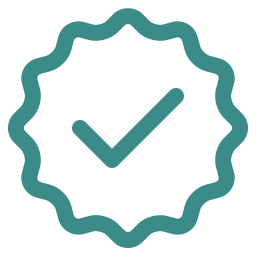Revitalize Your Body: Combating Sedentary Lifestyles through Pilates for Improved Posture, Flexibility, and Vitality
We all know the feeling of sinking into our couches after a long day at work, binge-watching our favorite shows while snacking on chips and soda.
It's a comforting routine that can quickly turn into a sedentary lifestyle, one that poses significant risks to our health and well-being.
But fear not!
There is an effective way to counteract the effects of this lifestyle - Pilates.
This low-impact exercise has been gaining popularity in recent years as a way to strengthen the body, improve flexibility and balance, and promote overall wellness.
In this article, we will explore how Pilates can help sedentary individuals lead healthier lives by examining its benefits and providing tips for incorporating it into daily routines.
So let's get moving!
Understanding the Risks of a Sedentary Lifestyle
It's imperative to recognize the hazardous consequences of leading a sedentary lifestyle, as it can lead to numerous health issues.
Sitting for prolonged periods has been linked to an increased risk of heart disease, diabetes, obesity, and even cancer.
Additionally, a sedentary lifestyle can negatively impact one's mental health, causing depression and anxiety.
Fortunately, incorporating Pilates using various Pilates Equipment for Sale into your daily routine can help counteract these negative effects.
Pilates is a low-impact form of exercise that focuses on strengthening the core muscles while improving flexibility and balance.
By doing Pilates every day or following a Pilates workout plan using a Cadillac Pilates regularly, you can decrease the risks associated with sitting for extended periods.
If you're new to Pilates, starting with a beginner routine is recommended.
These routines are designed to introduce you to the basic movements and exercises used in Pilates while ensuring proper form and technique.
As you progress in your practice, you'll be able to challenge yourself with more advanced moves using AeroPilates Reformer which will further improve your strength and flexibility.
Incorporating Pilates into your daily routine can have numerous benefits for sedentary individuals.
In the next section, we'll explore how this low-impact exercise can improve cardiovascular health, increase energy levels, reduce stress levels, and boost overall well-being without putting too much strain on your body.
Benefits of Pilates for Sedentary Individuals
You'll be amazed at how Pilates can transform your body from being stagnant and immobile to flexible and agile.
Incorporating a regular Pilates routine into your daily life can bring numerous benefits, especially for sedentary individuals who are at higher risk of developing health problems due to prolonged sitting or inactivity.
Here are some ways that doing Pilates every day can help counteract the effects of a sedentary lifestyle:
-
Increase flexibility
Sedentary lifestyles often lead to stiff joints and muscles.
Pilates can help improve your flexibility by stretching tight muscles and strengthening weak ones.
-
Improve posture
Slouching or hunching over a desk for long periods of time can cause poor posture, which may result in back pain or discomfort.
A consistent Pilates workout plan can help align your spine, improve your postural awareness, and alleviate any pain or discomfort caused by poor posture.
-
Enhance overall strength
Sitting all day does not provide much physical activity, resulting in weakened muscles.
By engaging in a Pilates routine at home, you'll strengthen your core and other muscle groups while improving balance and stability.
Incorporating Pilates into our daily lives is an effective way to counteract the negative effects of living a sedentary lifestyle.
Next up, we'll explore how strengthening our core with Pilates exercises can further enhance our overall well-being.
Strengthening Your Core with Pilates
Transforming your core through consistent Pilates exercises can greatly improve your overall physical strength and stability, leading to a Healthier and more Active Lifestyle.
Doing Pilates on a Peak Pilates Reformer every day is an effective way to strengthen and tone the muscles of your abdomen, lower back, hips, and pelvis.
This low-impact workout targets the deep muscles that support your spine and help you maintain good posture throughout the day.
To get started with a Pilates workout plan, consider incorporating a variety of exercises that target different areas of your core while using a Microformer.
For example, you might start with some basic mat exercises like the hundred or single-leg stretch before moving on to more advanced moves like the plank or side bend.
If you have access to a Pilates reformer machine, like the Private Pilates Cadillac Reformer try adding this into your routine for an added challenge.
Consistency is key when it comes to building core strength with Pilates.
Make sure you set aside time each day to focus on these exercises and gradually increase reps or difficulty as you progress.
By committing to a regular Pilates reformer routine, you'll notice improvements in not only core strength but also flexibility and balance - which we'll cover next in our discussion about improving overall physical health.
Improving Flexibility and Balance
To improve your flexibility and balance, try incorporating exercises into your daily routine that focus on stretching and stability.
Pilates is an excellent choice for those looking to increase their flexibility and balance.
Doing Pilates every day can help you achieve better body control, alignment, and coordination.
When starting a Pilates workout plan, it's important to start slowly and gradually build up your routine.
You don't want to overdo it in the beginning as this could lead to injury or burnout.
Instead, start by doing a few exercises each day and gradually add more as you become comfortable with the movements.
Incorporating Pilates into your daily routine can have numerous benefits for both your physical health and mental well-being.
Not only does it help improve flexibility and balance but it also helps relieve stress, improve posture, and strengthen muscles.
Plus, since Pilates is a low-impact exercise, it's suitable for people of all ages and fitness levels.
With consistent practice, you'll notice improvements in your overall health and fitness level in no time!
Moving forward from this topic about improving flexibility through Pilates, let's now discuss how Pilates is a great low-impact exercise option for everyone!
Pilates as a Low-Impact Exercise
Experience the benefits of a low-impact exercise that's perfect for all fitness levels with Pilates.
Unlike high-intensity workouts, Pilates focuses on controlled movements and proper breathing techniques to build strength, flexibility, and endurance.
It's gentle on the joints and is an excellent option for those recovering from injuries or suffering from chronic pain.
Pilates uses slow, deliberate movements that target specific muscle groups in the body.
This type of training strengthens your core muscles, which improves your posture and balance.
Plus, because it doesn't involve jumping or running, you can do it almost anywhere without any special equipment.
All you need is a mat and some comfortable clothes.
Incorporating Pilates into your daily routine can help counteract the effects of sedentary lifestyles by increasing physical activity levels and reducing stress on the body.
In the next section, we'll share some tips on how to make Pilates a regular part of your day-to-day life.
Tips for Incorporating Pilates into Your Daily Routine
You can easily fit Pilates into your daily routine with these simple tips, and feel proud of yourself for taking care of your body.
Here are some suggestions to help you get started:
-
Schedule a regular time for your Pilates practice. Whether it's in the morning before work or in the evening after dinner, having a set time will help you stay committed.
-
Start small and gradually build up your practice. Don't try to do too much too soon, as this could lead to injury or burnout. Instead, aim for short sessions at first and gradually increase the duration over time.
-
Use online resources like videos or apps to guide your practice. There are many free resources available that can help you learn proper techniques and keep you motivated.
-
Involve friends or family members in your Pilates routine. Working out with others can be fun and provide added accountability.
By incorporating these tips into your daily routine, you'll be well on your way to reaping the benefits of Pilates for sedentary lifestyles.
In our next section, we'll explore some of the long-term health benefits that come from practicing Pilates regularly.
Long-Term Health Benefits of Pilates for Sedentary Lifestyles
Surprisingly, neglecting to incorporate Pilates into your daily routine can actually have detrimental effects on your long-term health.
Sedentary lifestyles have been linked to numerous health problems, such as obesity, heart disease, and diabetes.
Fortunately, Pilates especially the Private Pilates Reformer offers a solution to counteract these negative effects by improving overall physical fitness and reducing the risk of chronic diseases.
One of the most significant long-term benefits of Pilates is improved posture.
Many people who lead sedentary lifestyles often experience poor posture due to sitting in front of a computer or slouching while watching TV.
Over time, this can cause muscle imbalances and lead to chronic pain in the neck, back, and shoulders.
However, practicing Pilates can help strengthen core muscles that support proper alignment and improve flexibility in the spine.
As a result, you'll stand taller with better alignment and feel more comfortable throughout the day.
Another long-term benefit of Pilates for sedentary lifestyles is increased mobility.
When we sit for prolonged periods without regular movement breaks or exercise, our joints become stiff and immobile over time.
This can lead towards developing arthritis-like symptoms or limited range-of-motion issues which are painful enough at times.
If left unaddressed could grow severe enough ultimately causing disability-related issues too later down-the-line.
Pilates exercises targeting joint mobility can help keep these problems at bay by promoting healthy blood flow and synovial fluid lubrication around them so that they remain flexible throughout life without much trouble!
Overall, incorporating Pilates into your daily routine offers many long-term health benefits for those living a sedentary lifestyle.
From improving posture to increasing mobility while reducing the risk of chronic diseases associated with sitting all day.
There's no denying that this low-impact workout has something positive to offer everyone regardless of their age group or fitness level! So why not give it a try today?
With its many benefits and the ease of incorporating it into your daily routine, you have nothing to lose but everything to gain!
Frequently Asked Questions
What are some common misconceptions about Pilates and its effectiveness for sedentary individuals?
Some common misconceptions about Pilates include the belief that it's only for dancers or those who are already fit.
However, Pilates can be adapted to suit any fitness level and body type, making it a great option for those looking to counteract the effects of a sedentary lifestyle.
Pilates focuses on strengthening the core muscles, improving posture, and increasing flexibility.
These are all important factors in combatting the negative effects of sitting for long periods of time.
With proper instruction and regular practice, Pilates can be a highly effective way to improve overall health and well-being.
Can Pilates be a substitute for traditional cardiovascular exercise for sedentary individuals?
Pilates can be a valuable addition to a sedentary individual's exercise routine, but it shouldn't be viewed as a substitute for traditional cardiovascular exercise.
While Pilates can improve muscle strength and flexibility, it doesn't provide the same benefits as activities like running or cycling that elevate heart rate and promote cardiovascular health.
However, incorporating Pilates into a comprehensive fitness plan can help prevent injury and improve overall body awareness, making it easier to engage in other forms of exercise.
When combined with regular aerobic activity and healthy lifestyle habits like proper nutrition and adequate sleep, Pilates can play an important role in promoting physical health and well-being for sedentary individuals.
Are there any specific medical conditions or injuries that would make Pilates unsuitable for sedentary individuals?
There are certain medical conditions and injuries that may make Pilates unsuitable for sedentary individuals.
For example, individuals with severe osteoporosis or spinal cord injuries should avoid high-impact exercises like Pilates.
Additionally, those with herniated discs or chronic back pain should consult their doctor before beginning a Pilates routine as some movements may aggravate their condition.
It's important to discuss any pre-existing medical conditions with a healthcare professional before starting any new exercise program, including Pilates.
They can help determine if Pilates is suitable and provide modifications to ensure a safe and effective workout.
How long does it typically take to see noticeable improvements in strength, flexibility, and balance through a regular Pilates practice?
Typically, it takes a few weeks of regular Pilates practice to start seeing noticeable improvements in strength, flexibility, and balance.
However, the rate of progress can vary depending on a variety of factors such as age, fitness level, and consistency in practicing.
It's important to remember that Pilates is not a quick-fix solution but rather an ongoing practice that requires patience and dedication.
With consistent effort and proper guidance from a certified instructor, you can expect to see positive changes in your body's overall function within a few months of regular practice.
As with any exercise program, it's essential to listen to your body's needs and limitations while continuing to challenge yourself within safe limits.
Are there any dietary or lifestyle changes that should be made in conjunction with incorporating Pilates into a sedentary lifestyle?
When incorporating Pilates into a sedentary lifestyle, it's important to also make necessary dietary and lifestyle changes.
This includes maintaining a balanced diet with adequate protein, healthy fats, and complex carbohydrates to support muscle growth and energy during workouts.
It's also crucial to stay hydrated throughout the day by drinking plenty of water and avoiding sugary drinks.
In terms of lifestyle changes, it's recommended to incorporate more movement into daily routines such as taking frequent breaks from sitting, walking or biking instead of driving short distances, and finding enjoyable physical activities outside of Pilates to keep the body active.
By combining Pilates with these dietary and lifestyle adjustments, individuals can achieve optimal results in their overall health and well-being.
Conclusion
In conclusion, adopting a sedentary lifestyle can have significant negative effects on our overall health and well-being.
However, incorporating Pilates into our daily routines can help counteract these effects by improving core strength, flexibility, and balance.
Not only is Pilates a low-impact exercise that can be done in the comfort of our own homes, but it also has long-term health benefits for those who commit to it.
So why not give Pilates a try?
Start small by incorporating a few simple exercises into your daily routine and gradually build up from there.
By prioritizing physical activity in our lives and choosing practices like Pilates that prioritize both physical health and mental wellness, we can work towards creating healthier habits that will benefit us for years to come.
As Ralph Waldo Emerson once said, "The first wealth is health."
Let's invest in ourselves by making movement a regular part of our lives.




